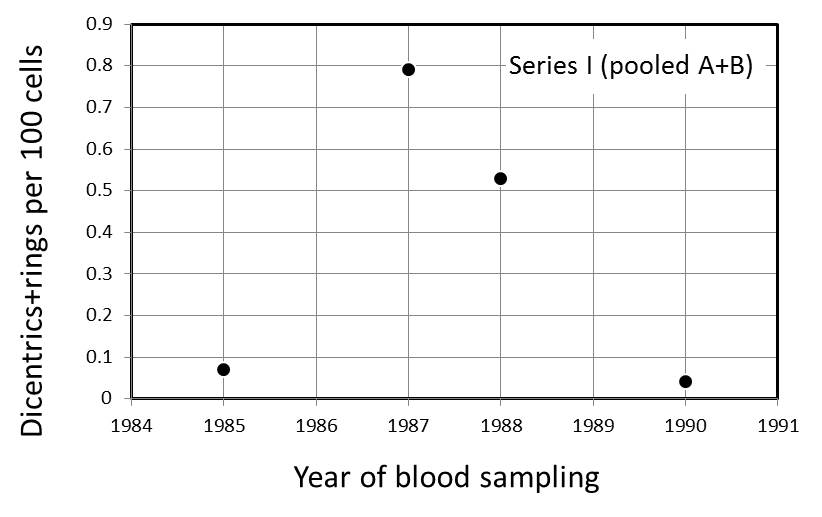|
Chernobyl NPP accident (26 April 1986) caused
widespread radioactive contamination in Western European countries. Salzburg
province in Austria was one of the areas with the highest fallout deposition.
Before the accident, the mean annual dose to the blood of average Salzburg
citizens has been estimated to be 0.9 mGy/year, including external terrestrial
radiation doses and internal doses of radionuclides. After Chernobyl accident,
additional mean external and internal dose during the first year (1 May
1986 to 1 May 1987) for an average Salzburg citizens was assessed at 0.32±0.10
mGy/year and for high-risk persons (e.g., farmers) 1.0±0.30 mGy/year.
Blood samples were obtained in 1987 from 16 volunteer Salzburg citizens
(7 in 9 June 1987, and 9 in 27 July 1987) (Series II). In addition, blood
samples taken from two Sarzburg citizens before the accident (1984, 1985),
and post-Chernobyl years, 1987, 1988 and 1990 (Series I), were compared. |
|
Pohl-Rüling, J., Haas, O., Brogger, A., Obe,
G., Letter, H., Daschil, F., Atzmüller, C., Lloyd, D., Kubiak, R. and Natarajan,
A. T. (1991): The effect on lymphocyte chromosomes of additional radiation
burden due to fallout in Salzburg (Austria) from the Chernobyl accident.
Mutation Res., 262:209-217.
|
